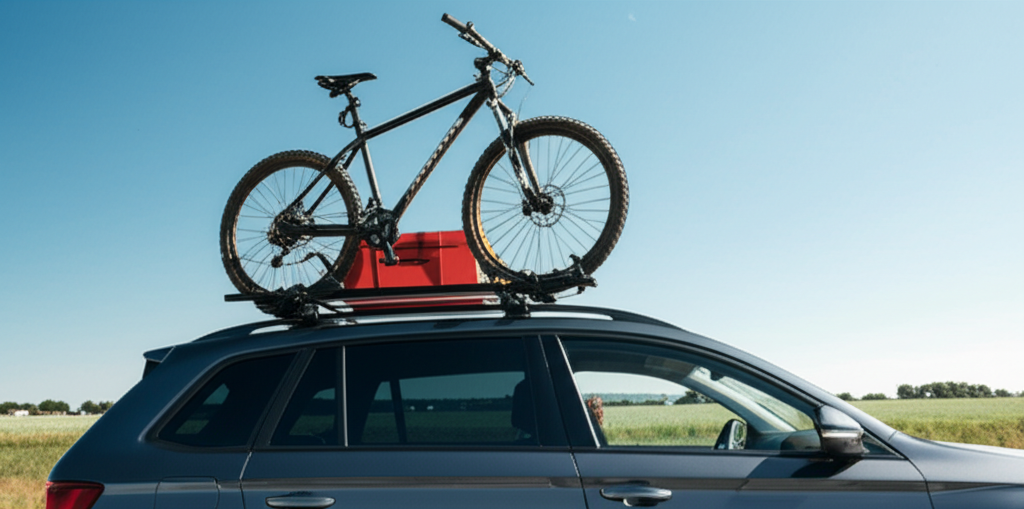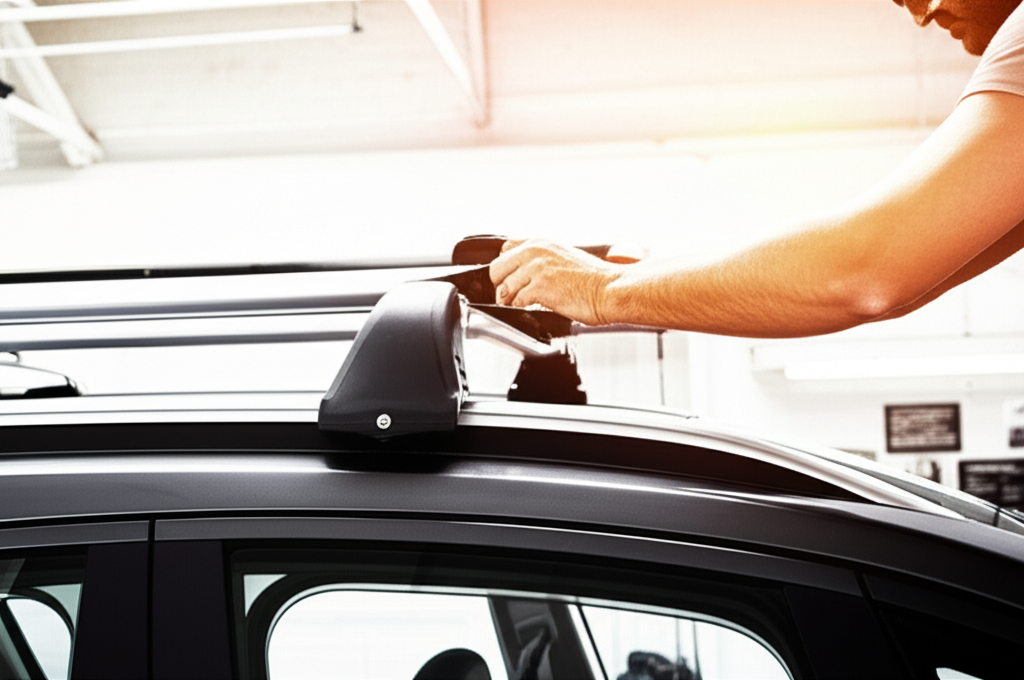Yes, roof racks can be very safe when properly installed and used. The key to safe roof rack operation lies in correct fitting, regular checks, secure loading, and mindful driving. Following essential safety tips ensures your gear travels securely and protects you and others on the road.
Hitting the open road with extra gear strapped to your car’s roof can be incredibly freeing. Whether you’re heading out for a camping trip, a ski adventure, or just need more space for your family’s stuff, a roof rack seems like the perfect solution. But as you’re packing up, a question might pop into your mind: “Are roof racks actually safe?” It’s a valid concern! The thought of precious cargo shifting or, worse, falling off can be unnerving. We’ve all seen those movies where something goes wrong on a road trip, and none of us want that to be us. The good news is, with the right knowledge and a few simple steps, you can ensure your roof rack is a safe and reliable extension of your vehicle’s carrying capacity. Let’s break down exactly how to make sure your gear stays put and your travels are worry-free.
Understanding Roof Rack Safety: What You Need to Know
A roof rack, in its simplest form, is a set of bars attached to the roof of a car. It’s designed to carry bulky items that wouldn’t otherwise fit inside your vehicle. Common types include crossbars, which are the most basic, and more specialized systems like cargo boxes, bike carriers, and kayak mounts. When we talk about safety, we’re really talking about three main areas: the rack itself, how you load it, and how you drive with it.
The Rack Itself: Installation is Key

The foundation of a safe roof rack system is its proper installation. Even the best rack can become a hazard if it’s not attached correctly to your vehicle. Different cars have different roof designs – some have raised side rails, others have flush rails, some have mounting points, and some have ‘bare’ roofs. Each system requires a specific fitting kit and a precise installation process. Think of it like building a sturdy shelf; if it’s not anchored well, it won’t hold weight safely.
Choosing the Right Roof Rack System
Before you even think about hitting the road, you need the right rack for your car and your needs. Factors to consider include:
- Your Vehicle Type: Sedans, SUVs, trucks, and minivans all have different roof structures and weight limits. Always check your car’s owner manual or consult with a roof rack specialist.
- What You’ll Carry: Are you hauling skis, a kayak, luggage, or just general gear? Different accessories are designed for specific loads. A cargo box offers enclosed protection, while bike racks keep your wheels secure.
- Weight Capacity: Every roof rack system and your car’s roof has a maximum weight limit. Overloading is a major safety risk. This includes the weight of the rack itself, plus everything you load onto it.
The Importance of Manufacturer Instructions
This cannot be stressed enough: always follow the manufacturer’s installation instructions precisely. These instructions are developed through extensive testing and are crucial for ensuring the rack is securely fastened. They will detail:
- Which parts go where.
- How to tighten specific components.
- The correct torque settings for bolts, if applicable.
- Where on the roof the rack should be positioned for optimal balance and load distribution.
Many reputable roof rack manufacturers, like Thule and Yakima, offer vehicle-specific fit guides on their websites. These guides help you find the exact rack and fit kit your car needs. You can often find these guides by searching online for “[Your Car Make and Model] roof rack finder,” and they’ll direct you to the appropriate products and installation manuals. For example, if you have a Subaru Outback with factory-installed raised rails, the installation will be different than for a Ford Escape with a bare roof.
Secure Loading: Your Gear’s Best Friend
Once your roof rack is installed correctly, the next critical step is securing your load. This is where many mistakes happen, leading to dangerous situations. A load that’s not properly secured can shift, slide, or even detach from the moving vehicle. Imagine a poorly tied kayak sliding sideways on a highway curve – it’s a recipe for disaster.
Weight Distribution Matters
The heavier items should ideally be placed over the front crossbar, and the load should be balanced evenly from side to side. This helps maintain the vehicle’s center of gravity and prevents wobbling. If you’re using a cargo box, fill it with heavier items at the bottom and lighter ones on top, and make sure the box itself is properly latched. Distribution isn’t just about balance; it’s about preventing undue stress on one part of the rack or car roof.
Using the Right Straps and Tie-Downs
Never underestimate the power of good tie-downs. Ratchet straps are excellent for securely tightening loads, but be careful not to overtighten them, as this can damage your gear or the car. For softer items, webbing straps with cam buckles are a great alternative. Always ensure your straps are in good condition – no fraying or damage. When in doubt, use more straps rather than fewer. A good rule of thumb is to have at least two straps going in each direction (front-to-back and side-to-side) for significant loads.
For specific items like bicycles or kayaks, specialized carriers are a must. These carriers are designed to grip the item securely while also attaching firmly to the crossbars. Never attempt to strap a kayak directly to bare crossbars without proper cradles or tie-downs designed for watercraft.
Checking and Re-Checking
This is a crucial step that many people skip. Before you set off, and at regular intervals during your journey (especially after the first 30-50 miles), pull over and check the security of your load and the tightness of your straps. Give your gear a firm shake. Does it move? If so, tighten the straps. Vibrations from the road can loosen even the tightest knots over time. A quick check can prevent a major problem.
Driving with a Roof Rack: Mindset Shift
Having a roof rack, especially when loaded, changes how your vehicle handles. It’s not just about the extra weight; it’s about how that weight affects your car’s aerodynamics and stability. You need to adjust your driving habits to compensate.
Speed Limits Are Your Friends, Even More So Now
It sounds obvious, but exceeding speed limits is exponentially more dangerous with a loaded roof rack. High speeds can create significant wind resistance, potentially destabilizing your load or even the rack itself. Furthermore, many roof rack manufacturers specify maximum speed limits for safe operation, often around 60-80 mph depending on the rack and load. Always refer to your rack’s manual for these guidelines.
Braking and Cornering Changes
The added weight on your roof acts like a lever. This means your braking distances will be longer. You need to anticipate stops well in advance and apply brakes more gently. Similarly, when cornering, the higher center of gravity makes your vehicle more prone to leaning and potentially tipping. Take corners slower and smoother than you normally would. Sudden maneuvers are best avoided entirely.
Awareness of Height Restrictions
This is a big one! Loaded roof racks, especially with cargo boxes, can significantly increase your vehicle’s overall height. Many drivers forget this added dimension, leading to disastrous encounters with parking garages, drive-thrus, low bridges, and even branches. Always be aware of your vehicle’s new height, and pay close attention to overhead signs and clearance markers. A common figure to remember is that a typical cargo box can add anywhere from 1 to 2.5 feet (0.3 to 0.75 meters) to your vehicle’s height.
Government transportation departments, like the Federal Highway Administration’s section on traffic analysis, often provide data on common road infrastructure limitations, including height clearances, which can be useful for planning longer trips. Knowing these figures can save you a costly mistake.
Wind and Weather Considerations
Strong crosswinds can buffet your vehicle and its load much more significantly than an unloaded car. Be extra cautious on exposed highways or bridges. Heavy rain or snow can also affect traction and visibility, compounding the challenges of driving with a roof rack.
Essential Safety Checks: A Pre-Trip and During-Trip Checklist
To ensure your roof rack remains safe for the entire journey, a routine of checks is vital. This isn’t a one-time setup; it’s an ongoing commitment to safety.
Pre-Trip Inspection (Before Every Long Journey)
Before you embark on any significant road trip, dedicate a few minutes to a thorough inspection:
- Rack Attachment Points: Check that all clamps, feet, and towers are securely attached to your car’s mounting points or rails. Give them a wiggle.
- Crossbar Security: Ensure the crossbars are firmly in place and haven’t shifted.
- Hardware Tightness: Verify that all nuts, bolts, and locking mechanisms are tight. Hand-tighten anything that feels loose.
- Strap and Tie-Down Condition: Inspect all straps, ropes, and bungee cords for any signs of wear, fraying, or damage.
- Load Security: Gently try to move the items on the rack. They should feel completely stable.
- Vehicle Height Awareness: Mentally note your vehicle’s increased height if you’ve attached a cargo box or tall items.
During-Trip Checks (Every Few Hours or After Major Stops)
The road can work wonders on loosening things up. Make these checks part of your regular driving routine:
- Pull Over Safely: Find a safe place to pull off the road, away from traffic.
- Visual Inspection: Look at your load from all angles. Does anything appear out of place or loose?
- Straps and Knots: Re-tighten any straps that feel slack. Ensure knots are still secure.
- Load Shift: Give your gear another gentle push or pull to confirm it hasn’t shifted.
- Rack Integrity: Briefly check the rack attachments to the car again.
These frequent checks are your best defense against a load becoming unsecured while you’re driving.
Common Roof Rack Problems and How to Avoid Them
Understanding what can go wrong helps you prevent it. Here are some common issues associated with roof racks:
| Problem | Cause | Solution |
|---|---|---|
| Load Shifts or Slides | Improperly secured load, loose straps, uneven weight distribution. | Use more straps, ensure straps are tight and in good condition, distribute weight evenly (heavier items towards the front). |
| Rack Detaches | Incorrect installation, worn-out parts, exceeding weight limits. | Follow manufacturer instructions meticulously for installation, regularly inspect rack components for wear and tear, adhere strictly to weight limits. |
| Vehicle Damage (Dents, Scratches) | Improperly fitted rack, loose parts rubbing against the car, overloading. | Use the correct vehicle-specific fit kit, ensure all contact points are protected (some kits come with protective pads), avoid overloading. |
| Increased Wind Noise | Aerodynamic drag from the rack itself or poorly packed items. | Ensure crossbars are properly aligned, consider aerodynamic crossbars, pack cargo boxes snugly, use fairings if available. |
| Exceeding Height Restrictions | Forgetting the added height of the rack and cargo. | Always be aware of your vehicle’s new dimensions; check signs for overhead clearances, especially in parking garages and drive-thrus. |
| Tire Wear and Fuel Economy Issues | Constant drag from an empty or poorly designed rack, or unevenly distributed load influencing vehicle dynamics. | Remove the rack when not in use if practical, opt for aerodynamic rack designs, ensure balanced loading. |
A well-maintained and correctly used roof rack is an asset. However, neglecting these safety aspects can turn it into a serious liability. Resources like the National Highway Traffic Safety Administration (NHTSA) on vehicle safety equipment provide general safety information that extends to how aftermarket accessories can impact vehicle dynamics.
Advanced Safety: Rack Maintenance and Upgrades
Beyond basic installation and loading, there are long-term maintenance and upgrade considerations that contribute to roof rack safety and longevity.
Regular Maintenance Schedule
Treat your roof rack like any other part of your vehicle that requires periodic attention:
- Annual Inspection: At least once a year, or before your peak travel season, give your rack a thorough once-over. Check for rust, corrosion, or any signs of material fatigue.
- Lubrication: For moving parts on specialized carriers (like pivot points on bike racks), a simple spray of lubricant can prevent stiffness and ensure smooth operation.
- Cleaning: Wash your rack with mild soap and water to remove dirt, salt, and debris, which can accelerate corrosion and wear.
When to Consider an Upgrade or Replacement
Roof racks are built to last, but they aren’t indestructible. You should consider an upgrade or replacement if:
- Visible Damage: Cracks, significant bends, or severe corrosion are major red flags.
- Worn Parts: Straps, buckles, or any locking mechanisms that are damaged or no longer secure should be replaced immediately.
- Outdated System: Technology and design improve. If your rack is very old, it might not meet current safety standards or offer the best aerodynamics.
- Changed Needs: If you’ve bought a new vehicle or your carrying needs have changed significantly (e.g., from carrying skis to a full camping setup), you may need a different type of rack system.
The Benefits of Quality Brands
While it might be tempting to go for the cheapest option, investing in reputable brands like Thule, Yakima, Kuat, or Rhino-Rack often pays off in terms of safety, durability, and ease of use. These brands invest heavily in research and development, ensuring their products meet rigorous safety standards and come with comprehensive installation guides and customer support. For example, many high-quality racks undergo dynamic testing to simulate real-world driving conditions, ensuring they can withstand the stresses of the road.
Roof Rack Safety FAQ
Q1: How often should I check my roof rack and its load?
You should perform a thorough check before every long trip and then check the load security every few hours or after any significant stop (like refueling or a restroom break). Small vibrations can loosen straps over time.
Q2: What is the typical weight limit for a roof rack?
Weight limits vary greatly depending on the vehicle, the rack system, and the crossbars. Most factory-installed racks have limits of around 165 lbs (75 kg), while aftermarket systems can range from 100 lbs to over 200 lbs (45 to 90+ kg). Always consult your vehicle’s owner manual and the roof rack manufacturer’s specifications. Remember, this limit includes the weight of the rack itself!
Q3: Can I use bungee cords to secure my gear?
Bungee cords are generally NOT recommended for securing significant loads on a roof rack. They can stretch and loosen unpredictably, offering poor security. Use sturdy, adjustable straps like ratchet straps or cam buckle straps made for cargo. Bungee cords are best for bundling smaller, lighter items together before they are secured by proper straps.
Q4: My roof rack makes a lot of noise. Is that a safety issue?
While some wind noise is normal with a roof rack, excessive whistling or roaring could indicate improper installation or that the rack is not aerodynamic. Ensure crossbars are correctly positioned and tightened. If you have a cargo box, ensure it’s closed tightly. For persistent noise, consider adding a fairing or switching to a more aerodynamic rack system. While noise itself isn’t usually a direct safety hazard, it can be a symptom of instability.
Q5: What happens if my roof rack or load falls off a moving vehicle?
This is extremely dangerous and can cause serious accidents, leading to vehicle damage, injuries, or fatalities. It’s considered negligence and can result in significant legal consequences, including fines and driving license repercussions. This is why diligent installation, secure loading, and regular checks are paramount.
Q6: Can I install a roof rack on a car with a sunroof?
Yes, many roof rack systems are designed to be compatible with sunroofs. However, it’s crucial to use the correct fit kit and installation method recommended by the manufacturer. Some racks may restrict the sunroof’s ability to open fully or at all. Always check the rack’s compatibility and installation instructions specific to your vehicle model and sunroof.
Recent Posts
Unlock the secrets to perfect engine health with our easy-to-understand guide on car oil temperature! You'll be cruising confidently knowing exactly what that gauge means for your ride.
Spotting a mysterious puddle under your ride? Don't stress—we've uncovered the simplest, quickest fixes for those annoying car oil leaks right now!


